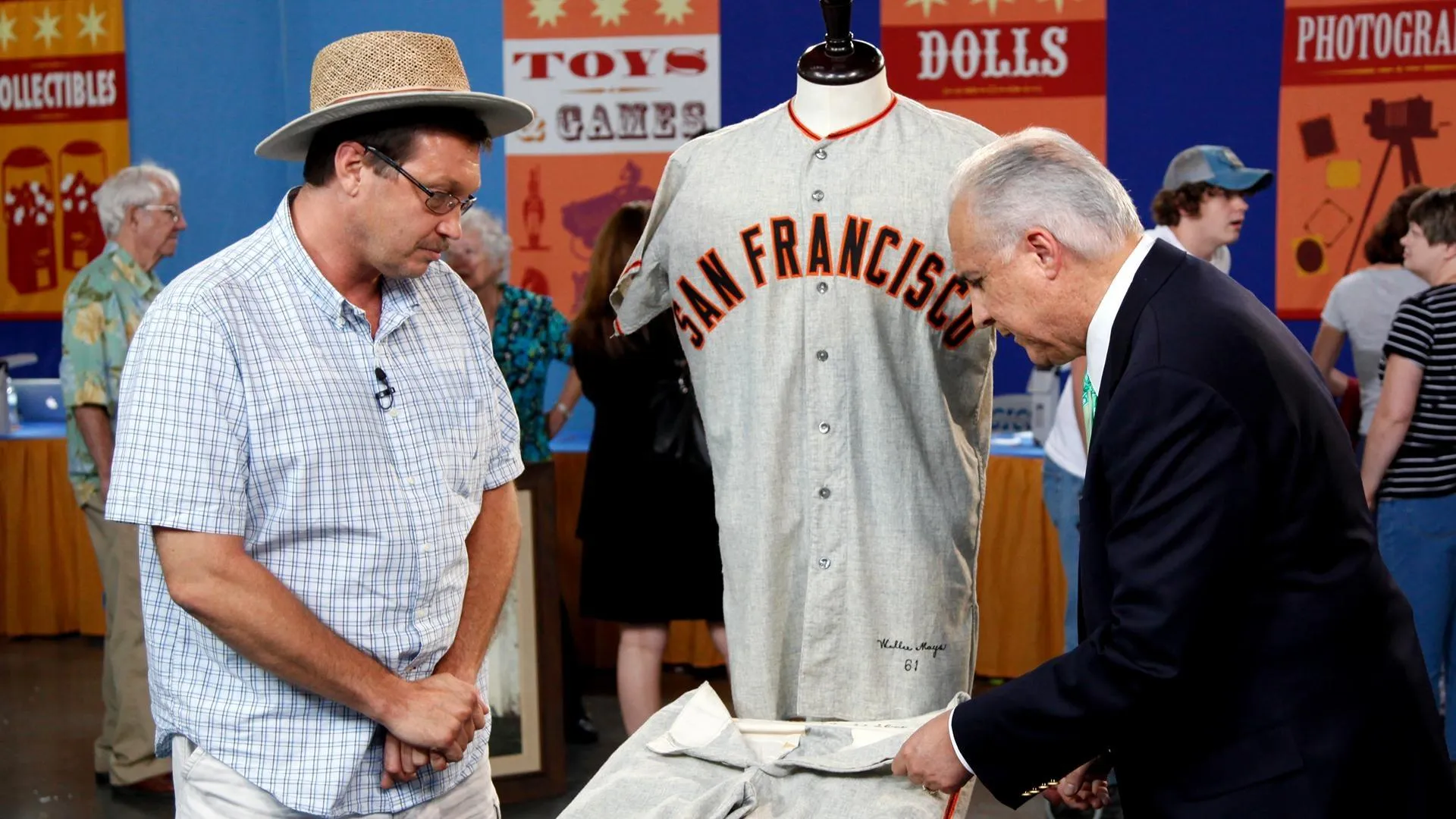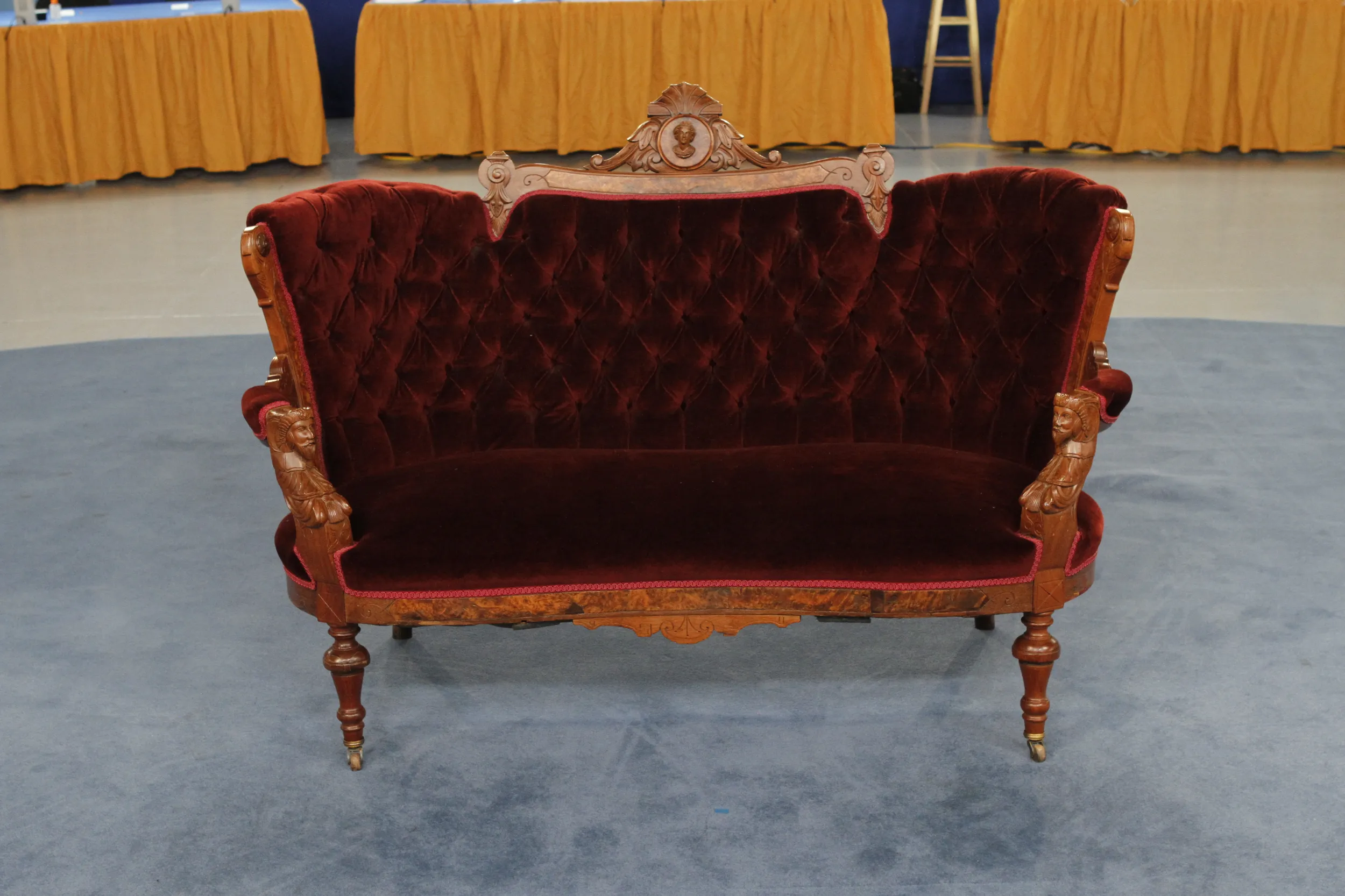GUEST: We've got my great-great- grandfather's slant-top desk. I have no idea where it was made. I bought it out of my great-aunt's estate about 15 or 16 years ago.
APPRAISER: The owner of the desk originally was from Massachusetts. It's what we call a Chippendale figured walnut slant-front desk. And it was made in Pennsylvania, probably between the years of 1760 and 1780. And if you could help me, we'll pull out the candle drawers.
GUEST: All right.
APPRAISER: That will support the lid. And we'll pull back the curtain and reveal the magic of this desk. I have to say, this interior is probably one of the most elaborate interiors I've ever seen in my career. And we mentioned that it was made in Pennsylvania, and a couple things give us the clue that it was made there. First, the primary wood surface is a figured walnut, which is used from Pennsylvania down south. You see that in Maryland, Virginia. If we look at the secondary woods, of what the drawers are made of, you see poplar in there and cedar. And if we look at this incredible prospect door, you see this wonderful stylized shell and this great trailing vine work and this punch decoration. And this shell is very indicative of Pennsylvania. It's a little quirky, though. You see this type of shell on knees and crests of chairs that are made in Philadelphia. But because of the unusual added elements, we can tell that this was made outside of the city. The sinuous curves on the drawer fronts and these wonderful dividers of the valanced pigeonholes are incredible. There has been some restoration. What did you have done?
GUEST: The outside was not in very good shape. They refused to do anything, as you can tell, the difference between the outside and the inside.
APPRAISER: Now, did the outside look like the inside?
GUEST: No, it was in bad shape.
APPRAISER: This is what we absolutely love to see. I mean, you talk about the grungy surface, the original surface. Love it. Absolutely love it. The outside has been refinished, which hurts a little bit. If you look on your side and my side, you see these rectangular patches. Any idea what they were for?
GUEST: I assume old hinges.
APPRAISER: Right. Old hinges, exactly. And unfortunately we don't see a corresponding patch on the fall lid. So I believe the lid is replaced. If we go down on the desk a little further, we can see these wooden escutcheons. And those would not be period. You'd expect to see brass ones. Brasses are replaced. And then the final thing is that the base has been replaced. Typically, you'd see a different molding profile, and the shape of the foot would be different. We have casters here. I expect that they were probably put on at the time at the base molding. The real magic with this desk is the interior.
GUEST: Right.
APPRAISER: This is just so fabulous. Do you have any idea what you paid for it?
GUEST: Gosh, that's been a long time ago. Senile senior citizen. I can't remember.
APPRAISER: Okay. I would say a conservative auction estimate for this piece would be $8,000 to $12,000.
GUEST: What should I insure it for?
APPRAISER: I'd probably insure it for about $15,000 to $20,000. When I opened this up and saw this, my knees started to tremble. I mean, it really is the most elaborate desk.
GUEST: Ah.
APPRAISER: If it was all original, I think you could easily say $25,000 to $35,000.










